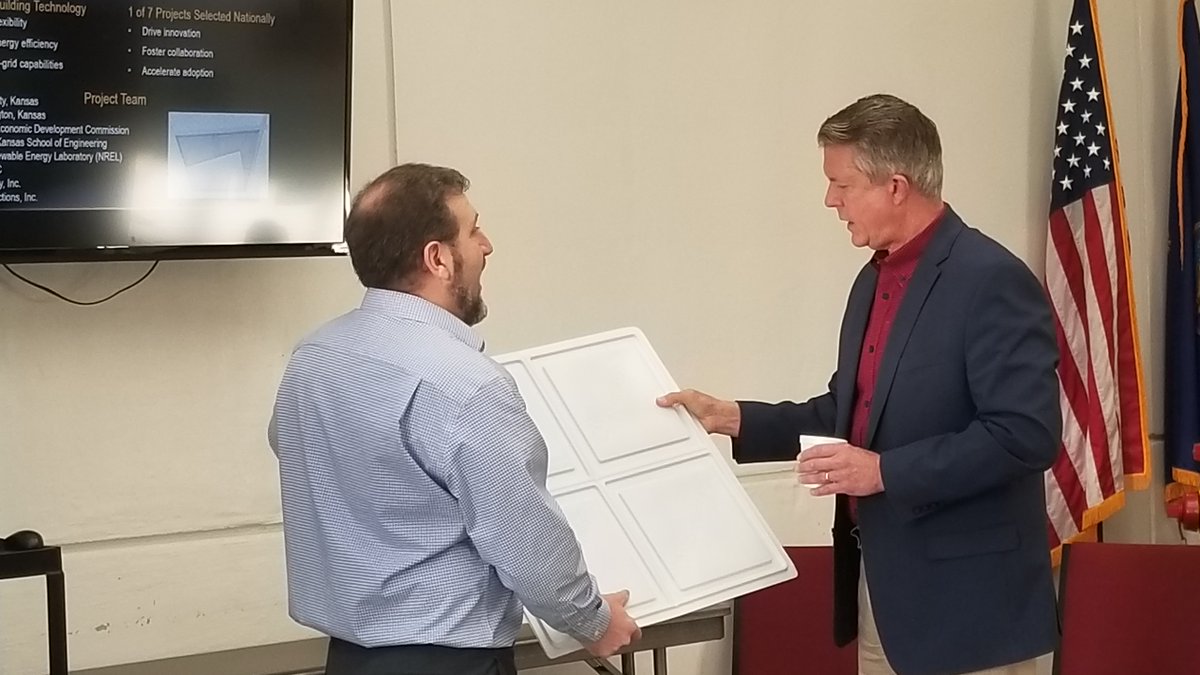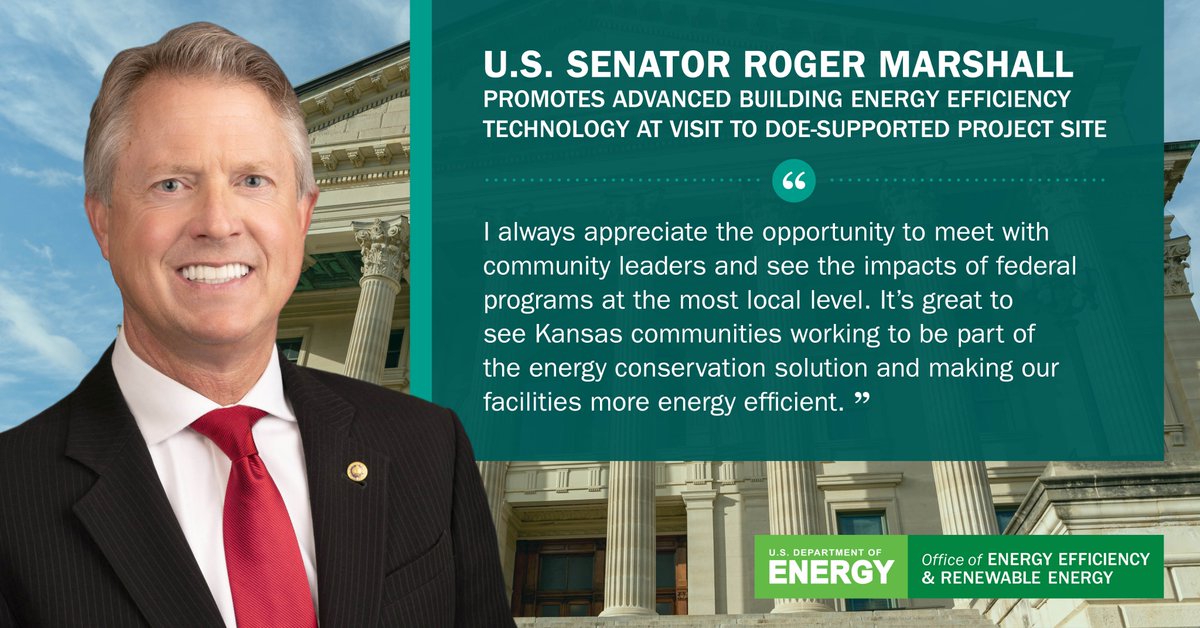
Over the weekend @RogerMarshallMD got a VIP tour of an innovative building #energyefficiency project led by Sumner County, KS with the help of several public and private partners.🤝wellingtondailynews.com/2022/03/12/us-… 

Sumner County, with the City of Wellington and other partners, is testing passive thermal energy storage in roof and ceiling tiles in six public sector buildings. The project will:
💡Reduce heating, cooling, and electric use by 20%
💵Cut energy costs
✅Demonstrate new tech
💡Reduce heating, cooling, and electric use by 20%
💵Cut energy costs
✅Demonstrate new tech

.@RogerMarshallMD spoke about the importance of federal investment in innovation and energy efficiency:
“If your electric bill is $400, saving 20% is significant and rates aren’t coming down.”
“If your electric bill is $400, saving 20% is significant and rates aren’t coming down.”

This project is supported through DOE’s Building Technologies Proving Ground – Public Sector Technology Field Validation initiative, which aims to de-risk and drive innovation of advanced building technologies. 🏢🏠 Read more here: energy.gov/eere/buildings…
• • •
Missing some Tweet in this thread? You can try to
force a refresh














